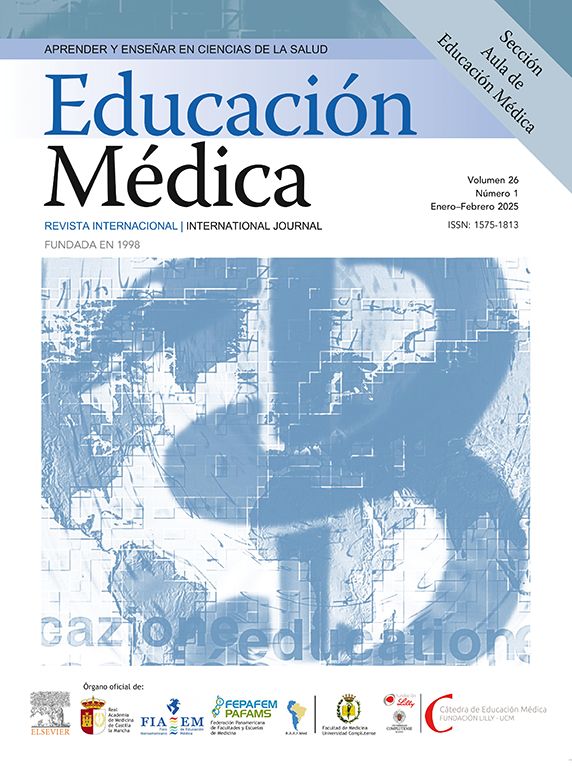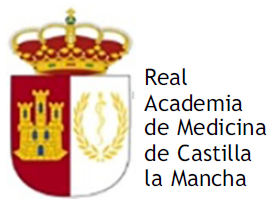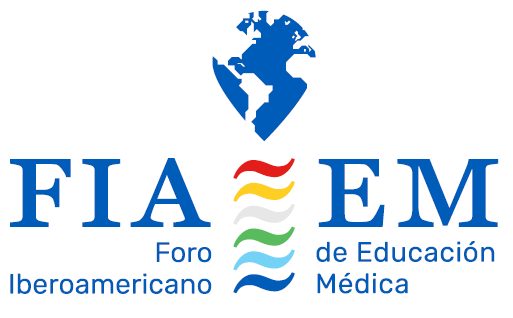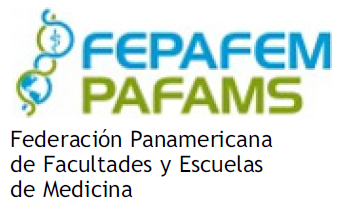Artificial intelligence has revolutionized nursing education with the emergence of ChatGPT, which has the potential to transform active teaching methods. Despite this potential, there is still insufficient literature on the use of ChatGPT in nursing education. The aim of this pilot study is to examine nurse educators' knowledge, attitudes, and perceptions of ChatGPT, as well as their experience of using ChatGPT in active teaching methods.
Subjects and methodsWe conducted a cross-sectional pilot study using a self-administered questionnaire with 104 participants.
ResultsAlthough 61.52% of participants have an average level of knowledge about ChatGPT, they are not very familiar with its use, as 59.6% do not use it. In fact, 70.52% expressed indifference or negativity towards the use of ChatGPT by their students. Furthermore, male educators are five times more likely to believe that ChatGPT facilitates students cheating (OR = 5.147 (1.641; 16.141)).
Despite being aware of the challenges associated with ChatGPT, educators in our sample demonstrate limited awareness of its potential applications in active teaching methods. For instance, only 33.33% use ChatGPT in problem-based learning, while a mere 10% use ChatGPT in simulation-based learning. This reluctance extends to use ChatGPT in teaching activities such as preparing pedagogical content (8.69%) and the design of assessment tools (9.78%).
ConclusionImplementing institutional guidelines and providing nurse educators with training on the potential applications of ChatGPT are essential for promoting positive change in nursing education. This will enable educators to guide their students in the responsible and ethical use of ChatGPT.
La inteligencia artificial ha revolucionado la educación en enfermería con la aparición de ChatGPT, que tiene el potencial de transformar los métodos de enseñanza activa. A pesar de este potencial, todavía existe una literatura insuficiente sobre el uso de ChatGPT en la educación en enfermería. El objetivo de este estudio piloto es examinar el conocimiento, las actitudes y las percepciones de los educadores de enfermería sobre ChatGPT, así como su experiencia en el uso de ChatGPT en métodos de enseñanza activa.
Sujetos y métodosRealizamos un estudio piloto transversal utilizando un cuestionario autoadministrado con 104 participantes.
ResultadosAunque el 61.52% de los participantes tiene un nivel promedio de conocimiento sobre ChatGPT, no están muy familiarizados con su uso, ya que el 59,6% no lo utiliza. De hecho, el 70.52% expresó indiferencia o negatividad hacia el uso de ChatGPT por parte de sus estudiantes. Además, los educadores masculinos tienen cinco veces más probabilidades de creer que ChatGPT facilita el plagio por parte de los estudiantes (OR = 5.147 (1.641; 16.141)). A pesar de ser conscientes de los desafíos asociados con ChatGPT, los educadores en nuestra muestra demuestran una conciencia limitada de sus posibles aplicaciones en los métodos de enseñanza activa. Por ejemplo, solo el 33.33% utiliza ChatGPT en el aprendizaje basado en problemas, mientras que solo un 10% lo utiliza en el aprendizaje basado en simulación. Esta reticencia se extiende a la integración de ChatGPT en actividades de enseñanza, como la preparación de contenido pedagógico (8.69%) y el diseño de herramientas de evaluación (9.78%).
ConclusiónImplementar directrices institucionales y proporcionar formación a los educadores de enfermería sobre las aplicaciones potenciales de ChatGPT es de gran importancia para catalizar un cambio positivo en la educación en enfermería. De esta manera, los educadores podrán guiar a sus estudiantes en el uso responsable y ético de ChatGPT.
Health sciences are undergoing constant evolution, requiring ongoing advancements in nursing education. Active teaching methods are highly recommended within these disciplines. These methods help develop critical thinking, teamwork, problem-solving skills, and communication skills among learners, as well as increase motivation for learning.1 Active pedagogy includes problem-based learning, case-based learning, project-based learning, flipped classroom, team-based learning, simulation, game-based learning, and mind mapping-based learning.1,2
In the era of artificial intelligence, nursing education has experienced a significant revolution following the launch of the first version ChatGPT-3.5 by OpenAI at the end of November 2022. ChatGPT is a human language model able to generate information in response to a textual request.3 ChatGPT is capable of translating, summarizing, and synthesizing texts. Additionally, it can be used for the preparation of educational content, assessment tools, scientific articles, generating simulation scenarios, and designing workshops.4
ChatGPT holds significant potential for application in nursing education, assisting educators in educational content design, learner monitoring, and assessment.5,6 Consequently, educators can devote more time to pedagogical activities with higher learning objectives such as reflexive practice.7 However, concerns among some educators about the integration of ChatGPT in education persist, perceiving it as a threat. These concerns stem from challenges such as plagiarism, ethical considerations, and accuracy in generated information.8
Nevertheless, using ChatGPT in active teaching methods holds promise. Nurse educators can use its functionalities to develop innovative teaching strategies,2 therefore improving learners' satisfaction, communication, and critical-thinking skills.9
Despite its potential, there is a lack of research exploring the use of ChatGPT in active teaching methods within in nursing education. Therefore, the present research aims at examining nurse educators' knowledge, attitudes, and perceptions of ChatGPT, as well as their experiences using it in active teaching methods.
MethodsStudy designThis is a descriptive correlational pilot study conducted among nurse educators. This study was carried out in four Higher nursing training institutes in Morocco out between February1 and June 1, 2024.
ParticipantsTraining at the study institutes is provided by permanent lecturers and temporary lecturers with various degrees (BSc, MA, PhD).
The study targeted all permanent and temporary educators teaching at the institutes where the study took place and who consented to take part in this study. Most participants took part in a ‘Digital Skills’ training session designed to enhance their digital proficiency and integrate innovative educational tools into their teaching practices. However, these educators have not received any institutional training in the use of ChatGPT. Those involved in validating and testing the data collection tool were excluded from participation.
Data collectionWe developed a questionnaire consisting of 20 items. This questionnaire was designed on the basis of our literature review. Following the validation of 2 expert educators, it was tested on a small sample in order to improve items' clarity. In fact, it was recommended to reword certain items to ensure that participants understood them correctly. These modifications were agreed upon with the experts before being implemented.
The questionnaire comprises 3 parts: The study discovers educators' knowledge of and attitudes towards ChatGPT, their experiences with using ChatGPT in active teaching methods, as well as their perceptions of both the potential benefits and challenges associated with its integration. The reliability of this questionnaire was calculated using Cronbach's alpha coefficient (=0.719).
We clarify that the use of ChatGPT in active learning refers to its integration into various pedagogical activities, such as content preparation, in-class workshops, or evaluation, within the framework of an active teaching method.
Ethical considerationsThis study was approved by a University Hospital Ethics Committee under the number 72/2024.
Initially, we have obtained the necessary authorizations from the 4 institutes where the study took place and informed consent of participants. Throughout this study, we maintained strict data confidentiality and participants anonymity.
Statistical analysisStatistical analysis was carried out using SPSS software, version 25. Descriptive statistics included frequency and percentage for qualitative variables, and mean and standard deviation (SD) for the quantitative variable.
The chi-square (χ2) test was used to check the associations between qualitative variables. Binary logistic regression was also used to elucidate the relationship between binary independent and dependent variables.
ResultsCharacteristics of participants104 nurse educators agreed to take part in this study. 57.7% (n = 60) of them were females. The average age was 40.78 (±7.09). 41.3% (n = 43) of the participants had a doctoral degree, and 19.23% (n = 20) with 15 years' experience in higher education. Furthermore, most of them teach diverse courses including biology, physiology, pharmacology, semiology, ethics, nursing sciences, and so forth.
Educators' knowledge and attitude of ChatGPTWe asked participants a multiple-choice question to assess their knowledge of ChatGPT, awarding 1 point for each correct answer. The overall level of knowledge was determined by the total score. Participants who scored less than 2 points were classified as having a low level of knowledge about ChatGPT, those with scores between 2 and 4 points were considered to have a medium level, and participants scoring more than 4 points were deemed to have a high level of knowledge.
Table 1 shows that in terms of knowledge of ChatGPT, 61.52% (n = 64) of participants have a medium level, 55.76% (n = 58) stated that ChatGPT is a tool that helps students cheat. Furthermore, the majority (70.52%) of participants were indifferent to the use of ChatGPT by their students, and 40.77% refused to use it for fear of inaccuracy and wrongful information., and 40.77% opposed its use by students due to concern about fear of inaccuracy and wrongful information.
Educators’ knowledge and attitude regarding ChatGPT (N = 104).
| Variable | Total | Female | Male | P value |
|---|---|---|---|---|
| (n = 104) | (n = 60) | (n = 44) | ||
| N (%) | N (%) | N (%) | ||
| Level of knowledge/6 | ||||
| Low (<2) | 33 (31.72) | 22 (36.66) | 11 (25.0) | .134 |
| Medium [2–4] | 64 (61.52) | 32 (53.32) | 32 (72.73) | |
| High (>4) | 7 (6.72) | 6 (9.99) | 1 (2.27) | |
| The capabilities of ChatGPT | ||||
| Support students to better understand concepts | 57 (54.80) | 33 (55) | 24 (54.54) | .963 |
| Write the work on behalf of students | 45 (43.26) | 18 (30) | 27 (61.36) | .001 |
| Helps students cheat | 58 (55.76) | 26 (43.33) | 32 (72.72) | .003 |
| Perform unnecessary tasks and students should not use it | 15 (14.42) | 7 (11.66) | 8 (18.18) | .350 |
| Attitude towards students' use ChatGPT | ||||
| You recommend that your students use ChatGPT | 8 (8.42) | 5 (8.92) | 3 (7.69) | .785 |
| You forbid your students from using ChatGPT | 20 (21.05) | 13 (23.21) | 7 (17.94) | |
| You are indifferent to your students' use ChatGPT | 67 (70.52) | 38 (67.85) | 29 (74.35) | |
| You recommend that your students use ChatGPT | 8 (8.42) | 5 (8.92) | 3 (7.69) | |
| Reason for refuse using ChatGPT? | ||||
| Out of distrust | 42 (40.77) | 28 (47.45) | 14 (31.81) | .110 |
| Due to a lack of knowledge about its existence | 9 (8.73) | 5 (8.47) | 4 (9.09) | .913 |
| Due to a lack of knowledge about its capabilities | 29 (28.15) | 17 (28.81) | 12 (27.27) | .863 |
| Without having a specific reason | 20 (19.41) | 10 (16.94) | 10 (22.,72) | .463 |
Chi-square test is used to compare qualitative variables. Binary logistic regression is used to define association.
There was no statistical difference in knowledge between male and female educators (P = .134). However, male educators were 5 times more likely to believe that ChatGPT was responsible for writing assignments for students (OR = 5.488 (1.883; 15.991)) and aiding in cheating (OR = 5.147 (1.641; 16.141)).
Educators' experiences and perception related to the use of ChatGPT in active teaching methodsAccording to Table 2, 40.4% (n = 42) of participants use ChatGPT, while 68.33% (n = 40) do so rarely or occasionally. ChatGPT-3.5 is the version most used by the majority of participants (70%).
Educators' experiences related to the use of ChatGPT in active teaching methods.
| Variable | Total | Female | Male | P-value |
|---|---|---|---|---|
| N (%) | N (%) | |||
| Do you use ChatGPT? | 42 (40.4) | 26 (43.33) | 16 (36.36) | .390 |
| How often do you use ChatGPT? | ||||
| Very rarely | 12 (20.00) | 6 (18.18) | 6 (22.22) | .971 |
| Occasionally | 28 (48.33) | 16 (48.48) | 13 (48.14) | |
| Frequently | 17 (28.33) | 10 (30.30) | 7 (25.92) | |
| Very frequently | 2 (3.3) | 1 (3.03) | 1 (3.70) | |
| Do you use tools similar to ChatGPT? | 6 (18.18) | 3 (20.00) | 3 (16.66) | .323 |
| What version of ChatGPT are you using? | ||||
| ChatGPT-3.5 | 35 (70.00) | 20 (71.42) | 15 (68.18) | .804 |
| ChatGPT-4.0 | 15 (30.00) | 8 (28.57) | 7 (31.81) | |
| For which method do you use ChatGPT? | ||||
| Problem-based learning | 30 (33.33) | 15 (28.84) | 15 (39.47) | .290 |
| Case-based learning | 26 (28.88) | 15 (28.84) | 11 (28.94) | .992 |
| Flipped classroom. | 18 (20.00) | 7 (13.46) | 11 (28.94) | .070 |
| Simulation-based learning | 9 (10.00) | 4 (7.69) | 5 (13.15) | .393 |
| Project-based learning | 19 (21.11) | 10 (19.23) | 9 (23.68) | .609 |
| Mind mapping | 13 (14.44) | 6 (11.53) | 7 (18.42) | .359 |
| Team-based learning | 21 (23.33) | 11 (21.15) | 10 (26.31) | .567 |
| Game-based learning | 10 (11.11) | 6 (11.53) | 4 (10.52) | .880 |
| If you don't use ChatGPT, what active teaching method do you think it could be used with? | ||||
| Problem-based learning | 36 (35.29) | 23 (38.98) | 13 (30.23) | .361 |
| Case-based learning | 31 (30.39) | 17 (28.81) | 14 (3255) | .685 |
| Flipped classroom. | 29 (28.43) | 20 (33.89) | 9 (20.93) | .152 |
| Simulation-based learning | 27 (26.47) | 14 (23.72) | 13 (30.23) | .468 |
| Project-based learning | 30 (29.41) | 18 (30.50) | 12 (27.90) | .776 |
| Mind mapping | 22 (21.56) | 14 (23.72) | 8 (18.60) | .534 |
| Team-based learning | 33 (32.35) | 23 (38.98) | 10 (23.25) | .094 |
| Game-based learning | 13 (12.74) | 6 (10.16) | 7 (16.27) | .361 |
| For what activity do you use ChatGPT? | ||||
| Generate information | 45 (48.91) | 25 (47.16) | 20 (51.28) | .696 |
| Problem-based learning instruction design | 9 (9.78) | 4 (7.54) | 5 (12.82) | .400 |
| Designing simulation scenarios | 12 (13.04) | 5 (9.43) | 7 (17.94) | .231 |
| Translate texts | 31 (33.69) | 14 (26.41) | 17 (43.58) | .085 |
| Preparing pedagogical content | 8 (8.69) | 2 (3.77) | 6 (15.38) | .051 |
| Preparing assessments tools | 9 (9.78) | 2 (3.77) | 7 (17.94) | .024a |
| Preparing ChatGPT-based classroom workshops | 4 (4.34) | 3 (5.66) | 1 (2.56) | .472 |
| Assessing student work | 1 (1.08) | 0 | 1 (2.56) | .241 |
| Prepare an oral communication | 5 (5.43) | 1 (1.88) | 4 (10.25) | .080 |
| Synthesize ideas | 26 (28.26) | 13 (24.52) | 13 (33.33) | .354 |
| Perform research | 16 (17.39) | 7 (13.20) | 9 (23.07) | .217 |
In terms of active teaching methods, 33.33% and 28.88 of participants using ChatGPT in problem-based learning and case study learning, respectively. However, 10% of participants using ChatGPT in simulation.
In this sense, ChatGPT is used mainly for information generation (35.29%). However, 4.34% and 1.08% use ChatGPT to prepare in-class workshops based on ChatGPT and to evaluate their students, respectively. Furthermore, 26.47% of participants who do not use ChatGPT believe that it can be associated with the simulation-based learning method. In addition, 35.29% of these educators perceived the use of ChatGPT in problem-based learning to be useful.
No statistically significant differences were found between male and female educators concerning ChatGPT use (P = .390), frequency of use (P = .971), or using in active teaching methods. However, male educators notably use ChatGPT more frequently for preparing assessment tools (P = .024).
Table 3 shows that perceptions regarding the benefits of using ChatGPT in active teaching methods are generally comparable between educators who use ChatGPT and those who do not, with the exception of the ability to improve learner engagement.
Comparison of perceptions regarding the advantages of using ChatGPT in active teaching methods between ChatGPT users and non-users.
| Variable | ChatGPT users | ChatGPT non-users | P value | ||||
|---|---|---|---|---|---|---|---|
| N (%) | N (%) | ||||||
| Yes | No | Insure | Yes | No | Insure | ||
| Using ChatGPT in active method helps learners to improve the following skills: | |||||||
| Commitment | 22 (56.41) | 13 (33.33) | 4 (10.25) | 18 (32.72) | 23 (41.81) | 14 (25.45) | .045a |
| Communication | 21 (52.50) | 15 (37.50) | 4 (10.00) | 23 (41.81) | 23 (41.81) | 9 (16.36) | .506 |
| Problem solving | 12 (31.57) | 17 (44.73) | 9 (23.68) | 14 (25.92) | 26 (48.14) | 14 (25.92) | .838 |
| Motivation | 17 (43.58) | 15 (38.46) | 7 (17.94) | 23 (42.59) | 20 (37.03) | 11 (20.37) | .958 |
| Critical thinking | 12 (30.76) | 20 (51.28) | 7 (17.94) | 10 (18.18) | 34 (61.81) | 11 (20.00) | .361 |
| Collaborative learning | 11 (28.20) | 20 (51.28) | 8 (20.51) | 16 (29.09) | 25 (45.45) | 14 (25.45) | .816 |
Perceptions of challenges associated with use ChatGPT in active teaching methods showed no statistically significant difference between male and female educators. Plagiarism is considered a major challenge perceived by educators (77.66%). In this regard, binary logistic regression demonstrated that educators who do not perceive plagiarism as a challenge of using ChatGPT are 4 times more likely to use it (OR = 4.321 (1.277; 14.620)). (Table 4).
Nurse educator's perceptions regarding ChatGPT risks and limitations.
| Variables | Total | Female | Male | P-value | |
|---|---|---|---|---|---|
| N (%) | |||||
| Threats of using | Plagiarism | 80 (77.66) | 48 (81.35) | 32 (72.72) | .298 |
| Copyright | 56 (54.36) | 31 (52.54) | 25 (56.81) | .666 | |
| Ethical problems | 55 (53.39) | 30 (50.84) | 25 (56.81) | .548 | |
| Regulatory problems | 23 (22.33) | 10 (16.94) | 13 (29.54) | .129 | |
| Lack of deep learning | 49 (47.57) | 28 (47.45) | 21 (47.72) | .978 | |
The aim of this research is to examine educators' knowledge, attitudes and perceptions of ChatGPT. On the other hand, to study nursing educators' experiences of using ChatGPT in active teaching methods.
The study findings demonstrate that although educators have a good understanding of the tool, they generally hold negative attitudes towards its use. A majority view ChatGPT primarily as a tool for facilitating cheating and completing tasks on behalf of students. This sentiment aligns with recent studies.10 In reality, learners may use ChatGPT to cheat, and educators may be unable to differentiate between human and machine work. This partly explains the mistrust expressed by participants in our study.
Educators' attitudes to the use of ChatGPT vary and can even be contradictory. These attitudes are generally influenced by institutional and political guidelines. While some educators prohibit its use, others advocate for its ethical application through student training and awareness.11 The majority of participants in our study expressed indifference to the use of ChatGPT by their students, a result that can be partially explained by the absence of any guidelines or regulatory policies in relation to the use of AI in the institutes of affiliation of our participants.
Educators can play an essential role in helping their students to use artificial intelligence tools responsibly and ethically, and this through their awareness of plagiarism, cheating and their harmful effects on academic integrity.12 With this in mind, educators must benefit from training, which will allow them to know the possible applications of these tools to the teaching–learning of nursing, as well as the potential and risks associated therewith.13 This training will enable educators to better explain the advantages and limitations of these tools to students.14
40.3% of participants reported using ChatGPT, with 68.33% rarely to occasionally. This result is consistent with the findings of a recent study.15 The latter revealed the importance of making potential users aware of the capacity of this technology in order to encourage them to use it. In terms of active pedagogy, the results showed that the participants in our study use ChatGPT mainly for problem-based learning and case-based learning. In fact, ChatGPT offers promising potential for these methods, as it is capable of presenting nursing students with authentic problem situations, thereby encouraging the development of their critical-thinking skills.11,16 In this regard, a study carried out among dental students showed that students had a positive perception of the use of ChatGPT in problem-based learning.17
ChatGPT can be used to create what-if scenarios,18 allowing learners to transfer the knowledge they have already acquired by offering a safe and secure learning environment.19 This will enhance their learning experience. However, the scenarios generated by ChatGPT must be validated and revised by the educators.20 In fact, a recent study carried out in the field of nursing showed that ChatGPT combined with simulation encourages the development of learner commitment and skills.21 However, the results of our study showed that educators were reluctant to use ChatGPT in simulation. However, the results of our study showed that educators were reluctant to use ChatGPT in simulation. This can be partly explained by factors associated with the simulation technique itself, such as the lack of resources.22 We can also try to explain this reluctance by the fact that most of the participants are over 40 years old. In fact, generation Z tends to use technology more than previous generations.23,24
On the other hand, educators not using ChatGPT expressed a positive attitude towards the use of ChatGPT with active teaching methods, particularly simulation, which raises the question of awareness and training to encourage educators to exploit the potential of artificial intelligence in nursing education. In fact, users who are made aware of the technology through practical demonstrations are likely to be more committed to using it.15 ChatGPT is able to provide great support to educators25, it can generate course content, offer assessment test and help educators to improve their teaching methods by adjusting them to the learner needs.26
As regards the activities in which educators use ChatGPT, we have observed that the majority of them use it mainly to generate and summarize information. Moreover, recent research into the factors associated with the acceptance of ChatGPT has shown that the primary influencing factor is habit, which means that as educators use ChatGPT, they will become more familiar with its potential application in teaching activities.27 This finding seems to explain the non-use of ChatGPT in teaching activities observed among the participants in our study, which may be due to their limited use of this tool. The reluctance to use ChatGPT in teaching activities observed among the participants in our study contrasts with the results of a study carried out among English-language educators.28 This discrepancy between the results can be explained by the complexity and sensitivity of the educational content relating to the field of health.
In fact, the majority of our participants use the free ChatGPT-3.5 version. We can explain this use by the fact that the participants did not perceive positive effects of the ChatGPT-4.0 version on their educational needs,15,27 which also aligns with the results of the present study showing educators' reluctance to use ChatGPT in educational activities such as preparing workshops or assessment tests.
ChatGPT provides learners with a personalized learning experience.6 It also increases problem-solving and critical-thinking skills, which has a positive impact on learner engagement.29,30 In this sense, the potential of active methods converges with that of ChatGPT. On the other hand, the participants in our study reported an overall negative perception of ChatGPT's potential. This result is consistent with a study carried out among health science educators.31
Furthermore, the results of the present study showed that ChatGPT user educators perceived the effect of using ChatGPT in active methods on engagement positively only compared to non-user educators. In fact, educators who perceive the performance of a tool positively are more likely to use it.3
Although ChatGPT offers many promising possibilities for nursing education in general5 and for active methods in particular, its use also presents a set of risks. In fact, by using ChatGPT, students can appropriate the content of others, which exposes them to plagiarism.8 In this sense, the present study revealed that the majority of participants identified plagiarism as a risk of using ChatGPT. Furthermore, binary logistic regression revealed that educators who do not consider plagiarism a risk are 4 times more likely to use ChatGPT. From this perspective, the perception of plagiarism as a risk seems to partially explain the limited using of ChatGPT in active teaching methods observed among the participants in our study.
In light of the findings from this study and the widespread use of ChatGPT in many fields, including the health sciences, decision-makers should prioritize developing policy and institutional guidelines. Additionally, organizing training sessions on the potential applications of ChatGPT in active teaching methods will empower educators to foster an ethical and informed use of ChatGPT in nursing education.
Limitations and future researchThis pilot study adopted a provenance sampling method, which is a limitation of this research. In addition, a mixed design should have inferred more about educators' perceptions of the use of ChatGPT in active methods.
The literature on the use of ChatGPT in active teaching methods in nursing education remains underexplored. Future research needs to look at a deeper exploration by adopting an experimental research design to assess the impact of using ChatGPT in active methods on learning outcomes.
FundingThis research did not receive any specific grant from funding agencies.
Author contributionsAll authors contributed to the study conception and design. Data collection was performed by Asma BOURIAMI, Kamal TAKHDAT, Sana BARKATOU and Hajar CHIKI; analysis was performed by Asma BOURIAMI, under the direction of Samia BOUSSAA and Ahmed Rhassane EL ADIB. The first draft of the manuscript was written by Asma BOURIAMI and all authors commented on previous versions of the manuscript. All authors revised and approved the final manuscript.
Ethical considerationsThe research protocol was approved by the ethics committee of the Mohammed VI University Hospital in Marrakesh (№ 72/24). The formal authorizations to conduct the study were obtained from the institutes where the study was conducted. Informed consent of the participants was provided, and the principle of anonymity and confidentiality was respected during this research.
Declaration of competing interestThe authors declare no competing interests.
The authors warmly thank all Educators who participated in this study.












